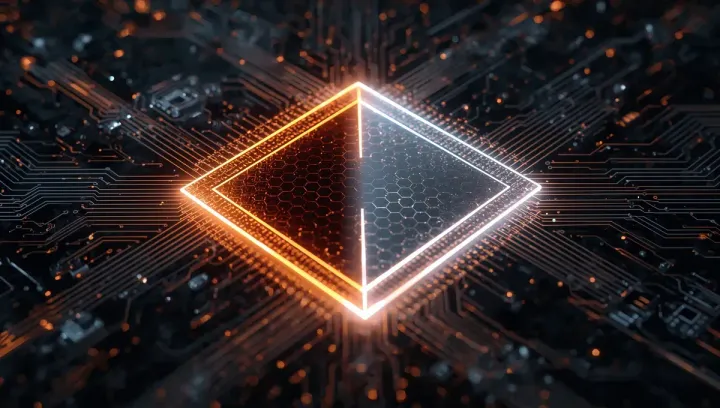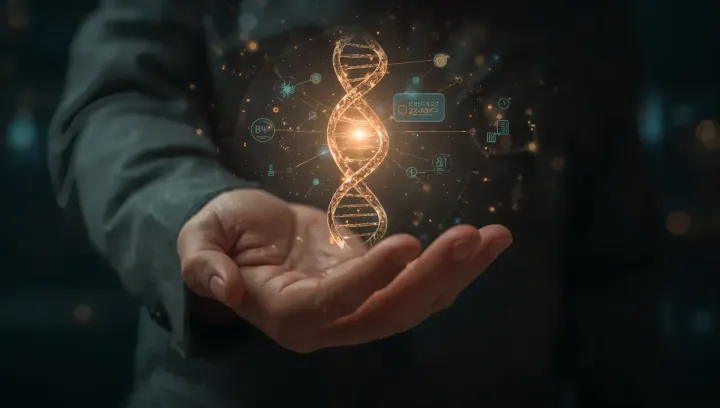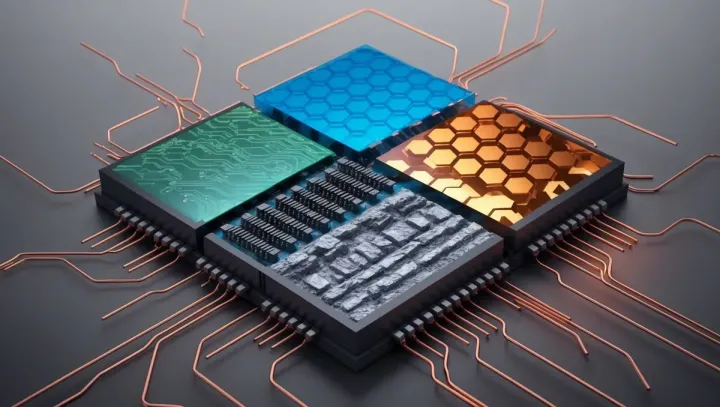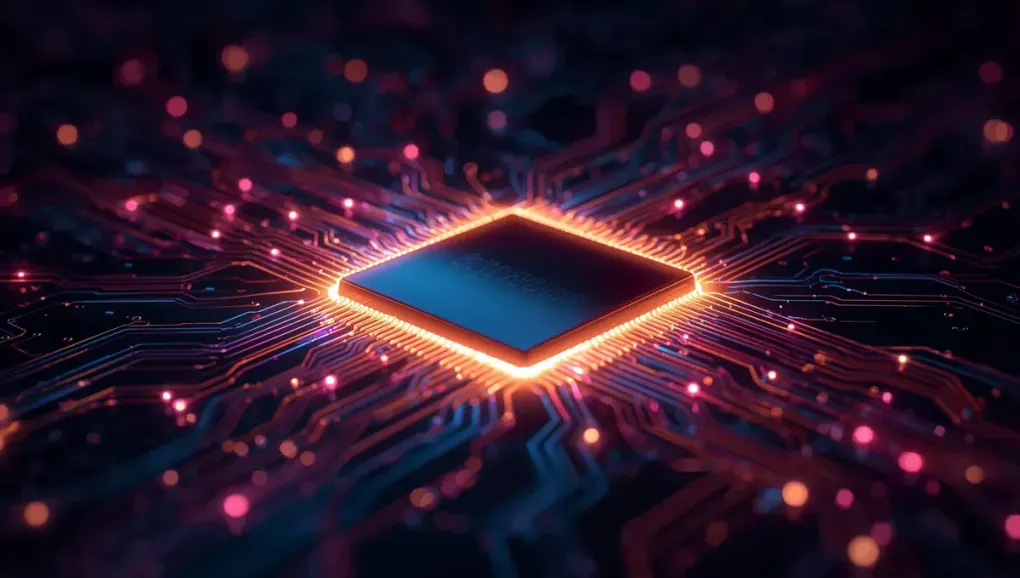
Future Chips: A Brain-Friendly Guide (Part 3) - Photonics: The Future is Made of Light
The Highway is Full
In our last post, we met the “Avengers of Materials” – Graphene, Borophene, and Black Phosphorus. They are amazing, but having faster cars doesn’t solve a fundamental problem: the highway is full.
In a normal chip, information travels as electrons, which are like tiny cars running on metal streets. As we make chips smaller and faster, these streets get incredibly congested. The result? Digital traffic jams, a lot of heat, and wasted energy. Your phone gets hot, and the battery drains faster simply because these electron-cars are constantly bumping into each other.
So, what’s the solution? What if we could build a completely new type of transportation system?
A Superhighway of Light
This is where Photonics comes in. It’s a revolutionary idea: instead of using electrons (electricity), we use photons (particles of light) to carry information.
- Current Chips: Imagine a busy city with millions of cars (electrons) stuck in traffic on narrow roads. It’s slow, chaotic, and generates a lot of noise and heat.
- Photonic Chips: Now, imagine a clean, perfectly organized superhighway with no cars, where information travels as pure light, moving through tiny, transparent channels called waveguides. There are no traffic jams, no friction, and almost no heat.
It’s literally the difference between being stuck in traffic and traveling at the speed of light.

The Magic Crystal That Directs Light
But how do you control the light inside a chip? You need a special material that acts like a perfect traffic controller. For decades, the hero material for this job has been Lithium Niobate (LN).
Think of it as a magic crystal for light. For over 50 years, it’s been the workhorse behind our fiber optic internet, but it was always too big and clunky to fit neatly into a chip. Recently, however, scientists developed a breakthrough technique to create ultra-thin, perfect films of LN. This “rebirth” of an old material is what makes modern photonic chips possible. It allows us to build tiny circuits that can steer, split, and manage light with incredible precision.
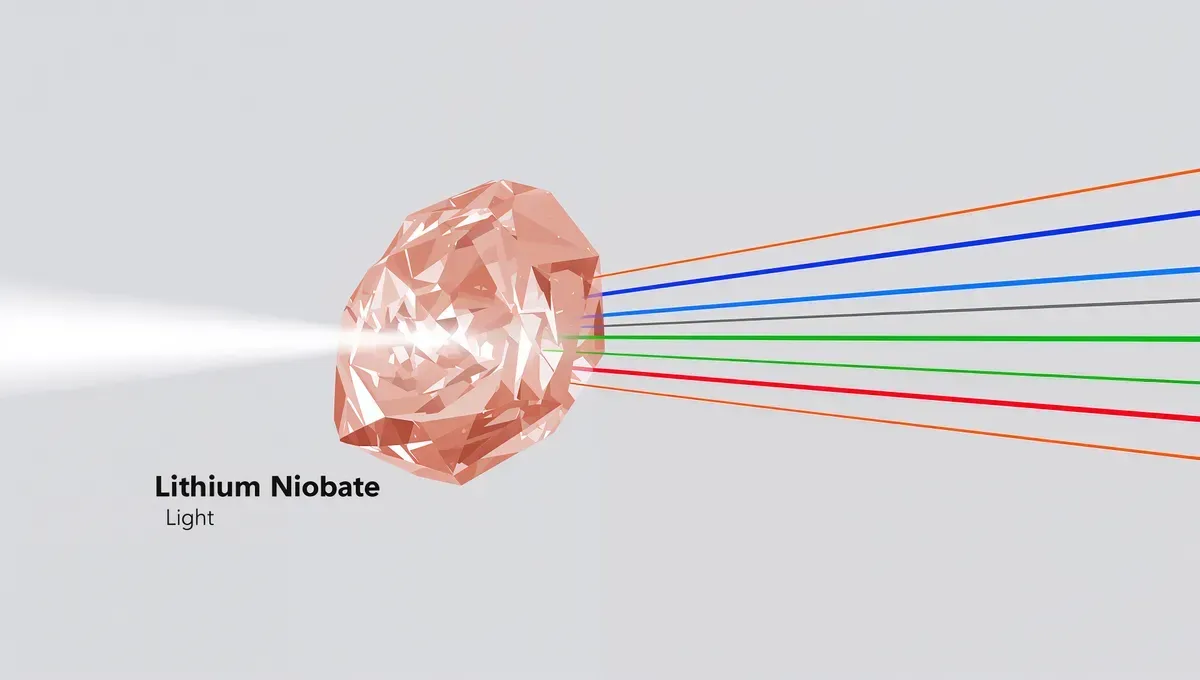
So, What are the Real Advantages?
This isn’t just a cool idea; it brings incredible, tangible benefits:
-
Insane Speed: Light is the fastest thing in the universe. Chips that use light can process and transmit information at speeds we can barely imagine. This is the key to future 6G networks, more powerful AI, and even for building the first practical quantum computers.
-
No More Overheating: Because photons don’t have mass or charge like electrons, they glide through the waveguides without generating friction or heat. This means our devices could run at full power without getting hot, solving one of the biggest problems in modern electronics.
-
Incredible Energy Efficiency: Less heat means less wasted energy. This translates directly into batteries that last much, much longer. Imagine charging your phone or laptop once a week instead of once a day.
-
More Than Just Computing: Photonic chips are also amazing sensors. Because light is so sensitive to the environment, these chips can be used to detect tiny chemical or biological changes, opening doors for advanced medical diagnostics.
You’re already familiar with this technology. It’s the same principle behind the fiber optic internet that brings super-fast connections to our homes, but now it’s being shrunk down to fit inside a tiny, powerful chip.
In the next part, we’ll see how this all comes together. What happens when we build a “dream team” and combine the best of silicon, the new super-materials, and the speed of light? Get ready for the perfect recipe!
References:
- Silicon Photonics Roadmap:
- Thin-film Lithium Niobate (a key photonic material):
- Programmable Microwave Photonic Circuit:
